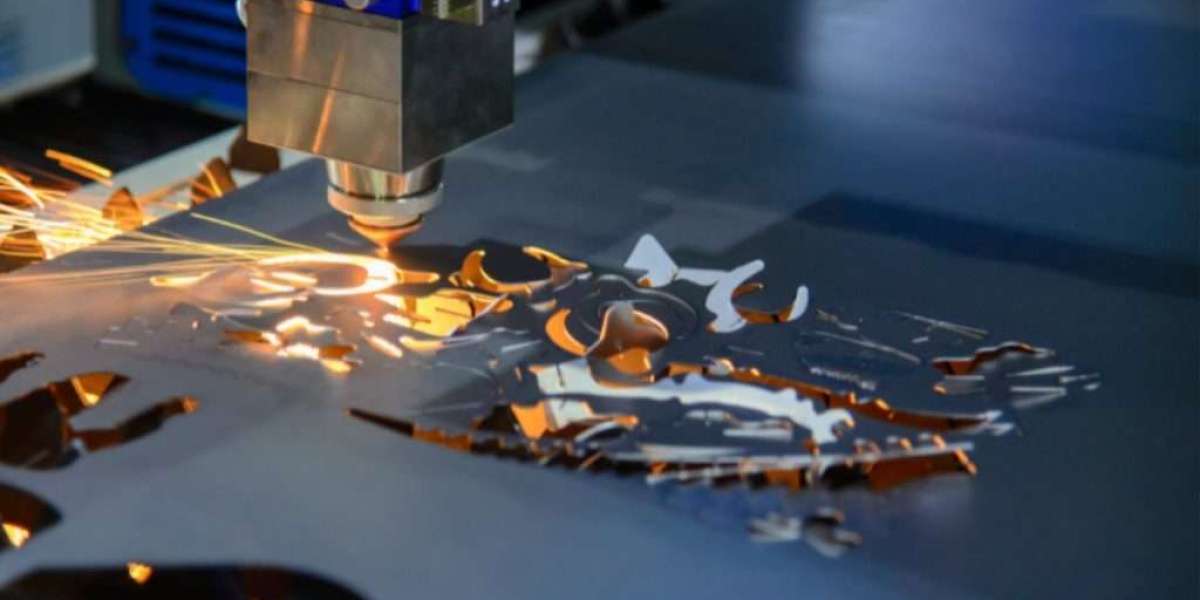Laser application has revolutionized multiple industries by providing a high degree of precision, efficiency, and flexibility in a variety of applications. Its applications span several sectors such as manufacturing, healthcare, research, and entertainment. This article explores how lasers are applied across various industries, highlighting their role in precision tasks, while focusing on their versatility without delving into the advantages or disadvantages of the technology.
1. Laser in Manufacturing and Metal Cutting
In manufacturing, lasers have transformed the way companies handle metal cutting and material processing. The ability of lasers to focus on specific areas with pinpoint accuracy enables manufacturers to perform intricate cutting, engraving, and marking on metals, plastics, and other materials. In metalworking, laser machines can cut through thick metal sheets, shape parts with high precision, and perform tasks that traditional mechanical tools might struggle with.
Laser cutting is used in a variety of industries, including automotive, aerospace, and electronics, to produce parts with tight tolerances. For example, in the automotive industry, lasers are employed for tasks like cutting exhaust pipes, body panels, and precision parts that require fine detailing. Laser engraving is another important application, used to mark identification codes, logos, and other intricate designs onto metal parts.
This technology has significantly reduced manufacturing time and improved overall product quality, making it indispensable in industries that require high-precision tasks.
2. Laser in Medical and Healthcare Applications
Lasers have found extensive applications in healthcare, where their ability to target specific tissues without damaging surrounding areas is vital. In surgeries, lasers can be used for procedures such as eye surgery, where precision is critical. The most common example is laser eye surgery for vision correction, where lasers reshape the cornea to correct refractive errors. This kind of laser procedure has replaced many traditional methods due to its accuracy, speed, and minimal invasiveness.
Lasers are also widely used in dermatology for skin resurfacing, tattoo removal, and treatment of various skin conditions. The ability to focus the laser on a very specific depth of tissue allows for effective treatment of acne scars, wrinkles, and pigmentation, all with minimal damage to the surrounding skin.
Beyond surgical procedures, lasers are used in diagnostic tools. For instance, laser spectroscopy helps in the identification of chemical compositions, aiding in diagnostic imaging, cancer detection, and even the analysis of bodily fluids.
3. Laser in Research and Development
Laser technology is pivotal in research and development (R&D), especially in physics, chemistry, and material science. Lasers are used as powerful tools in experiments, allowing scientists to manipulate light with high accuracy and study its interactions with different materials. In physics, lasers are used for experiments in quantum mechanics, optics, and photonics. Research involving laser cooling and trapping of atoms has provided new insights into atomic behavior and quantum state control.
In chemistry, lasers are used to initiate chemical reactions or break bonds with extreme precision. This ability allows researchers to study molecular structures and reaction pathways in ways that traditional methods could not. Additionally, lasers are used in spectroscopy to examine the molecular composition of substances, making them indispensable in chemical analysis.
Lasers have also paved the way for innovations in communication technology. The use of fiber optic cables, which employ laser beams to transmit data over long distances at high speeds, has revolutionized the telecommunication industry. This technology forms the backbone of the global internet infrastructure, making laser applications crucial in the advancement of global communication.
4. Laser in Entertainment and Art
In the entertainment industry, lasers have brought a new level of creativity and engagement, particularly in light shows, visual effects, and concert performances. Lasers are often used to create dynamic lighting displays in concerts, festivals, and theatrical performances. The ability of lasers to produce beams of light with highly controlled colors and intensity allows for stunning visual effects that captivate audiences.
Moreover, lasers have applications in interactive art installations, where they are used to create immersive environments or interact with the audience through motion sensors and light projections. Artists use lasers in these installations to explore concepts like space, light, and human interaction, producing works that challenge traditional notions of art.
In the film and gaming industries, lasers are utilized in special effects to create realistic explosions, lighting, and other visual elements. The use of lasers in creating digital environments in 3D modeling has also enhanced the realism of computer-generated imagery (CGI) in movies and video games.
5. Laser in Printing and Imaging
Another area where lasers have revolutionized an industry is in printing and imaging. Laser printers have largely replaced inkjet printers in offices and homes due to their speed, efficiency, and precision. Laser printing works by using a focused laser beam to create a pattern on a photosensitive drum, which is then transferred onto paper. This technology has enabled the printing of high-quality text and images, making it a staple in both personal and professional settings.
Lasers are also used in advanced imaging technologies, such as in medical imaging (e.g., laser-induced fluorescence imaging) and in optical character recognition (OCR) systems, where lasers scan documents and convert them into digital form.
In the field of photolithography, lasers play a key role in the manufacturing of semiconductor devices. The ability to focus a laser beam onto a very small area allows for the creation of the intricate patterns required for producing microchips, making them an essential component of modern electronics.
6. Laser in Defense and Security
Laser technology has significant applications in the defense and security industries, particularly for targeting, surveillance, and communication. In defense, lasers are used in guided missile systems, where they provide highly accurate targeting for weapons systems. This application enables precision strikes on targets with minimal collateral damage.
Lasers are also employed in optical sensors and surveillance equipment, where they help detect objects at long ranges. For example, lidar (light detection and ranging) systems use laser beams to map the topography of an area, assess distances, and even detect movement in real-time. This technology is invaluable in military operations and security surveillance, especially in terrains where traditional radar might struggle.
Additionally, lasers have been explored for use in anti-missile defense systems, where they could theoretically be used to disable incoming projectiles. The precision and speed of laser systems make them an attractive option for intercepting missiles or drones in mid-flight.
7. Laser in Space Exploration
Laser technology plays a crucial role in space exploration as well, offering precise methods for communication and measurement. Lasers are used in space telescopes to measure distances in deep space, allowing scientists to map the cosmos with incredible accuracy. Laser beams are also employed in optical communications systems to transmit data across vast distances at high speeds, facilitating communication between space missions and Earth.
In addition, lasers are used in instruments like laser altimeters, which measure the surface topography of other planets, moons, and asteroids. By bouncing laser beams off surfaces and measuring the time it takes for the light to return, scientists can generate highly accurate 3D maps of planetary surfaces, aiding in the exploration of celestial bodies.
Conclusion
Laser technology is embedded in a variety of industries, offering precision, speed, and efficiency in applications ranging from manufacturing and healthcare to research, entertainment, and defense. Its versatility and precision make it a cornerstone technology in modern industrial and scientific advancements. As laser technology continues to evolve, its impact on various fields is expected to grow, pushing the boundaries of what is possible in numerous sectors. Through the use of lasers, industries can perform complex tasks with unmatched accuracy, highlighting the transformative potential of this powerful technology.



